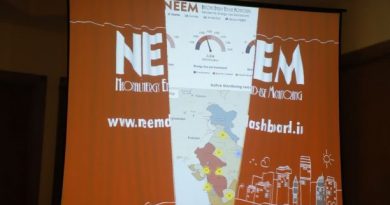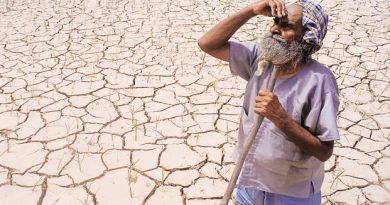Gujarat Fails Its Rivers: Sabarmati, Narmada Stretches in State Declared Dead.
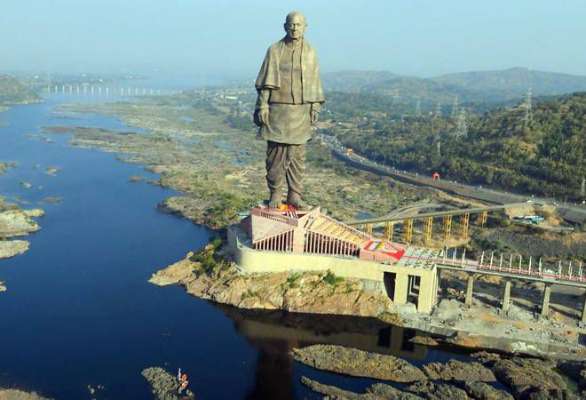 Would Sardar Patel have liked this for Gujarat?
Would Sardar Patel have liked this for Gujarat?
Sabarmati’s sorrow
In April, a joint probe by Gujarat Pollution Control Board (GPCB) and the Paryavaran Suraksha Samiti (PSS) revealed alarmingly high pollution levels in Sabarmati river. The investigation was a follow-up after Supreme Court ordered the state to check the release of industrial effluent and sewerage discharge into Sabarmati especially in Ahmedabad.
The investigation found that the river was dry in the Ahmedabad region, before the riverfront and was ‘brimming with stagnant water’ within the riverfront stretch. But the bad news doesn’t stop there. The officials found that the river was ‘dead’ with only industrial effluents and sewage in the last 120kms before meeting the Arabian sea.
The report also found that in many places where the treated sewage was being dumped in the river, even those crossed the set limits. For example, the stretch of the river near the Danilimda Sewage Treatment Plant had COD and BOD of 337 and 139 mg/I against the set limit of 250 and 30 per mg/I respectively. If one were to consider the norms set for the rivers, this should actually be zero and less than 3 mg/I respectively.
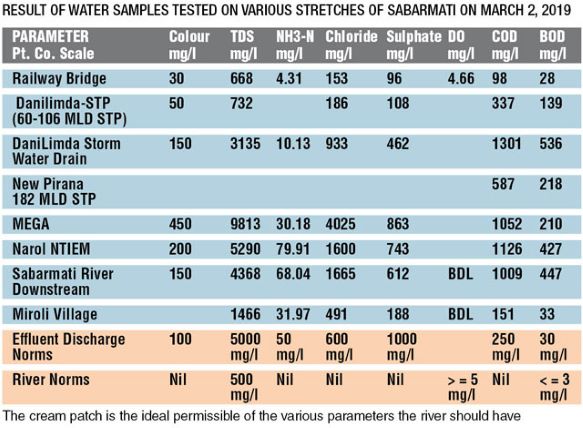
Sabarmati river, which gets polluted in the city limits, on an average receives 15% of the 960 million litres per day (MLD) of untreated sewage which the city generates every day. The city has the capacity to treat 817MLD of sewage.
GPCB states that the Sabarmati had the biological oxygen demand (BOD) of 8.6 and the chemical oxygen demand (COD) of 29 at the entry point of the city but the levels rise to 80 and 224 respectively at Vasna-Narol Bridge. The permissible limit of BOD is 30.
The Sabarmati River front project was incidentally supposed to be model river rejuvenation. Narmada itself is in the same situation downstream of the dam in Gujarat, which are all showcased as ‘success’ of the Gujarat model.
Read: Lucknow’s Gomti ‘Riverfront’ has Harsh Lessons for Redevelopment Votaries
Sabarmati, which has been cited as a model in managing an ‘urban’ river, is among Gujarat’s most 20 polluted rivers. According to the figures of the Union ministry of environment, forest and climate change (MoEF) submitted in the Lok Sabha on January 5, Gujarat ranks fourth among top five states with highly polluted rivers.
Narmada Woes
The Narmada river, which once was central India’s mightiest, has been deliberately killed in its last stretch, with grave consequences for farmers, village residents and especially fisherfolk, allege members of PSS.
“In its last 161 kms, the Narmada, instead of being a perennial river has been converted into a seasonal one, is dry and carries seawater with some industrial pollutants and untreated sewerage, has high chemical oxygen demand (COD), total dissolved solids (TDS) and low dissolved oxygen (DO) and the groundwater near it has deteriorated,” reads a letter the Samiti wrote to a number of nodal agencies including the Narmada Control Authority (NCA), the Union Ministry of Environment, Forest and Climate Change (MoEF&CC) and the Union Ministry of Water Resources (MoWR).
The non-profit also mentioned that it had carried out an investigation April 6, 2019. The study found TDS in the river between Nand and Bhadbhut to be in the range of 647—5,000—20,000—25,500 milligram per litre (mg/l). The normal level, according to river norms is 500 mg/l. COD in the same stretch was in the range 40—100—150 mg/l, whereas it should be nil. DO was between 4.49 and 7 mg/l, whereas it should be greater than or equal to 5 mg/l.
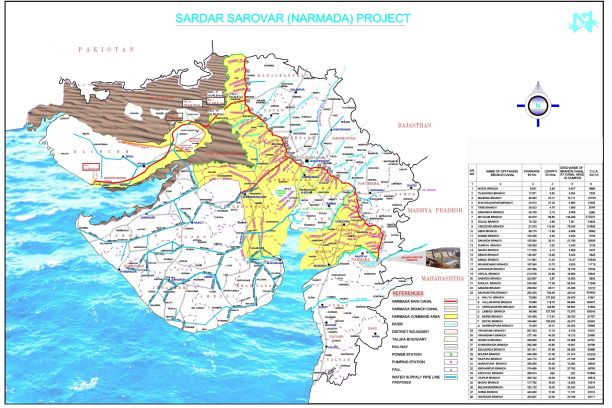
“Our present investigation reveals that the Government of Gujarat and the Ministry of Environment, Forests and Climate Change have grossly abdicated their responsibilities,” the letter read.
The non-profit blamed various completed and upcoming projects on the river including the Sardar Sarovar Project, Garudeshwar Weir, Statue of Unity and tourism projects near the statue for diminishing the flow of the river downstream.
It also cautioned that the proposed Bhadbhut Barrage project which aims to stop salinity ingress will add further to the problems and destroy the entire estuary and livelihoods of even more people.
It demanded that the authorities to immediately release 4,000 cusec (cubic metre per second) of water from the Sardar Sarovar project in downstream Narmada River till independent and credible studies are conducted for ascertaining ecological flows in the downstream of the Narmada River.
Double Whammy
While cleaning of Ganga river is a political hot potato for the mainstream political parties like the BJP and the Indian National Congress, rivers in Gujarat, which accounts for 20 of the 351 polluted river stretches identified across India, are not high on any national party’s agenda.
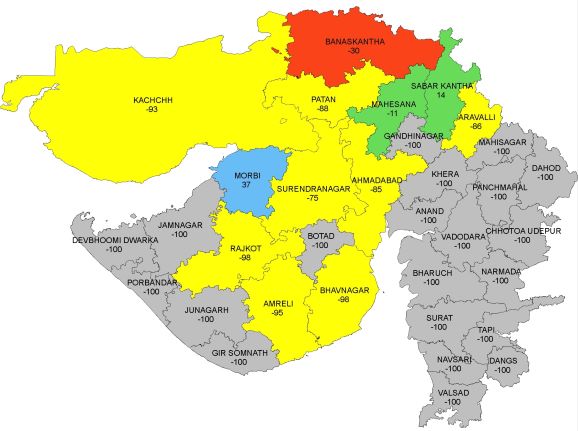
On top of it, now centre has issues drought advisory for Gujarat following the water levels dipping in the dams to critical levels. The condition has become so bad that people in the Navsari village in Surat, Gujarat are forced to drink the polluted water as the village is facing a water crisis.
Dayapur village in Lakhpat taluka of southern Kutch which is 520 km from the Narmada Main Canal, but has not received any water from the canal in the 71 years since its foundation stone was laid, promising to bring the waters of the Narmada river to the parched Kutch, Saurashtra and North Gujarat regions of the state. Already facing years of drought, these regions have seen no rainfall so far in 2019. The India Meteorological Department (IMD) recorded that Kutch saw a 93% departure from normal climate conditions, while other regions’ rainfall deficit is 100%.
After various disputes over water sharing between the states of the Narmada basin–Gujarat, Maharashtra, Madhya Pradesh and Rajasthan–the central government constituted a Narmada Water Disputes Tribunal (NWDT) on October 6, 1969 to settle the matter.
Till date, only 36% of the project has been completed, covering only parts of central Gujarat, which includes more urban districts such as Ahmedabad and Kheda.
Kutch, as well as Saurashtra, remains dependent on rain. And rainfall has been so scanty since 2017 that Gujarat is in the throes of a drought. Of the 401 villages in Gujarat facing drought, the maximum number of villages with 50% or more crop loss are in Kutch district, as per state SLBC report.
On the other hand, Industries in the Kutch and Saurashtra regions are taking water amounting to 844.85 mld (0.25 MAF) against their allocation of 675.88 mld (0.2 MAF) leaving nothing for farmers. All the industries set up in these regions show the Sardar Sarovar Dam as their main source of water supply, while farmland remains parched.
The Gujarat model seems to have missed the fishermen, pastoralist or people working in the animal husbandry .

